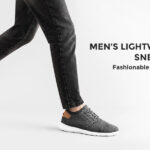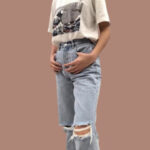Born from the underground music scene of Seattle in the late 1980s and early 1990s, Grunge Fashion emerged as a powerful counter-statement to the prevailing trends of the time. More than just clothing, it was an attitude, a reflection of the raw, unfiltered sound of bands like Nirvana, Pearl Jam, and Soundgarden. Grunge was the antithesis of the polished, glamorous aesthetics of the 80s, embracing instead a deliberately disheveled and nonchalant look.
“It could have been sludge, grime, crud, any word like that,” Jonathan Poneman, the co-founder of Sub Pop Records, famously said about the genre’s naming, highlighting the unrefined and deliberately messy essence of grunge. This ethos permeated not only the music but also the style that grew around it. Grunge fashion was about rejecting artifice, embracing comfort, and finding beauty in the imperfect.
The explosion of Nirvana’s “Smells Like Teen Spirit” in 1991 catapulted grunge into the mainstream. Fronted by Kurt Cobain, Nirvana became the visual and sonic embodiment of this burgeoning movement. Cobain, along with bandmates Krist Novoselic and Dave Grohl, inadvertently became fashion icons, representing a stark contrast to the hairspray-heavy bands and pop icons of the previous decade. Grunge offered an alternative – authentic, unpretentious, and real.
Kurt Cobain’s personal style was central to the grunge aesthetic. His rejection of conventional masculinity and embrace of androgynous elements resonated deeply. Ripped jeans, oversized sweaters, worn-out flannels, and Converse sneakers became the uniform of a generation. He effortlessly mixed high and low fashion, pairing tattered dresses with thermal leggings or donning oversized women’s sunglasses, challenging traditional fashion norms. As Alex Frank from The Fader noted, Cobain “made it cooler to look slouchy and loose, no matter if you were a boy or a girl,” solidifying his status as a style icon for both men and women.
Equally influential was Courtney Love, Cobain’s wife and frontwoman of Hole. Love’s “kinderwhore” style was a deliberate provocation, a blend of girlishness and rebellion. Slip dresses, ripped fishnets, babydoll dresses, and smeared lipstick became her signatures. Her look was a deconstructed version of femininity, challenging conventional beauty standards and embracing a raw, undone aesthetic. Love’s unapologetic and chaotic style was as much a part of grunge fashion as Cobain’s laid-back look.
The climate of Seattle itself played a role in shaping grunge style. The city’s perpetually overcast and rainy weather naturally lent itself to layering and practical, comfortable clothing. Soft, durable fabrics and relaxed silhouettes were essential. Grunge drew inspiration from various subcultures, including punk, goth, and metal, incorporating elements like ripped fabrics, dark colors, and heavy boots. However, unlike punk’s aggressive and deliberately shocking style, grunge maintained an air of nonchalance and practicality. It wasn’t about making a grand statement; it was about authenticity and comfort. Grunge was about looking like you didn’t care, even though the carefully curated dishevelment was a style in itself. It was a rejection of the superficiality of mainstream fashion, prioritizing individuality and genuine self-expression.

